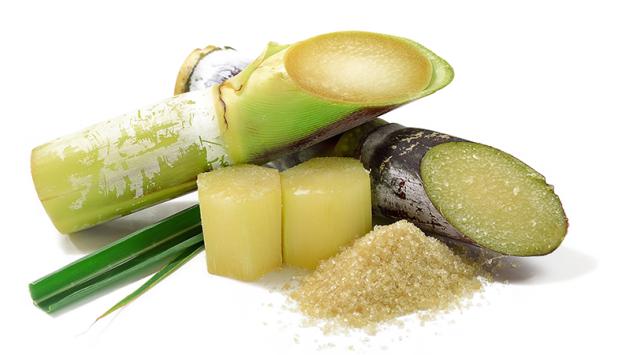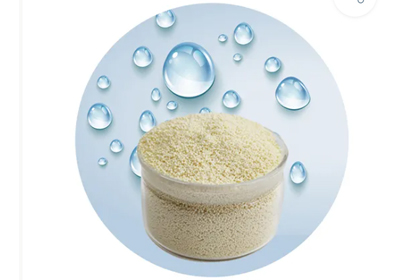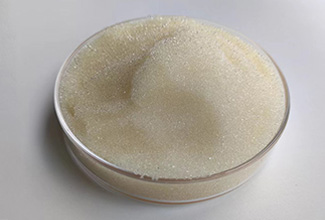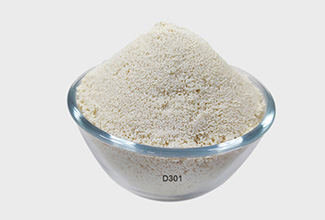The Applications of Ion Exchange Resins in the Sugar Industry
Sugar is an indispensable raw material in the food manufacturing industry. It is widely used in the production of beverages, confectionery, pastries, and many other food products, playing a crucial role in enhancing the flavor and texture of food. However, sugar purification faces significant challenges. During the sugar production process, molasses, a by - product, contains a large number of associated impurities. These impurities lead to a 10 - 20% loss of sugar in molasses, which not only reduces the yield of sugar but also increases production costs.
In response to this problem, ion exchange resins have emerged as a crucial solution. They can realize partial or full sugar recovery and effectively purify sugar - containing solutions. In recent years, with the continuous development of technology, the application of ion exchange resins in the entire sugar industry has been further expanded, covering multiple links from sugar juice treatment to the production of high - value - added sugar products.

1. High Purity Refinement of Sugar Solutions
In the pursuit of high - quality sugar products, the high purity refinement of sugar solutions is essential. Strongly acidic cation resins and weakly basic anion resins are widely used in this process. Strongly acidic cation resins can effectively remove cationic impurities such as calcium, magnesium, and potassium ions in sugar solutions. Weakly basic anion resins, on the other hand, are excellent at adsorbing anionic impurities like sulfate, chloride, and organic acids.
The combination of these two types of resins achieves remarkable removal rates. For inorganic substances and pigments in sugar solutions, the removal rate can reach over 95%. For nitrogen compounds, which are difficult to remove, the removal rate is also more than 70%. After this refinement process, the sugar solution is concentrated to produce high - grade syrup or refined sugar that meets strict quality standards, which is highly sought after in the high - end food market.
2. Decalcification and Softening of Sugar Liquor

During the production of sugar, lime clarification is a common step to remove impurities from dilute sugar juice. However, this process often leads to an increase in calcium content in the sugar juice. The high calcium content not only reduces the purity of the sugar juice but also causes severe scaling during the evaporation process. Scaling not only affects the heat transfer efficiency of evaporation equipment but also shortens the service life of the equipment, increasing maintenance costs and production downtime.
Sodium - type cation exchange resins provide an effective solution to this problem. These resins can exchange sodium ions with calcium and magnesium ions in the sugar liquor, thereby removing calcium and magnesium salts. This process, known as sugar juice softening, significantly reduces the scaling of evaporation tanks, ensuring the smooth operation of the evaporation process and improving production efficiency.
To further improve the quality of sugar liquor, after treatment with sodium - type cation exchange resins, the clear juice or syrup can be treated with strongly basic resins. This additional step can reduce the color value of the sugar liquor by 60 - 70%, further improving the purity of the sugar liquor and lowering the production rate of waste molasses, which brings significant economic benefits to sugar manufacturers.
3. Decolorization of Sugar Liquor
Decolorization is a key step in syrup refining. The color of sugar liquor not only affects the appearance of the final sugar product but also may indicate the presence of harmful impurities. Traditional decolorization methods mainly use bone char or activated carbon, but these methods have certain limitations. Bone char has a relatively low adsorption capacity and may introduce heavy metal impurities. Activated carbon, although it has a good adsorption effect, is difficult to regenerate and has a high cost in long - term use.
Ion exchange resins have obvious advantages in the decolorization of sugar liquor. They have a high adsorption capacity for pigments in sugar liquor, and can also effectively remove color value, turbidity, and insoluble impurities. Moreover, ion exchange resins can be regenerated and reused multiple times, which greatly reduces the cost of decolorization. Due to these advantages, ion exchange resins are widely used in the refining of various sugar liquors, such as sucrose, starch sugar, and xylose, ensuring that the final sugar products have a bright color and high quality.
4. Chromatographic Separation of Sugar Liquor
Chromatographic separation technology is a advanced separation method in the sugar industry. Its principle is to separate organic mixtures based on the difference in distribution coefficients between the stationary phase and the mobile phase. In the sugar industry, the stationary phase is ion exchange resin, and the mobile phase is the syrup to be treated. When the syrup flows through the ion exchange resin bed, different components in the syrup have different affinities for the ion exchange resin, resulting in different moving speeds. In this way, the components are separated from each other.
In recent years, chromatographic separation technology has developed rapidly in sugar liquor refining. The simulated moving bed chromatographic separation device, which has high efficiency and resolution, has been widely used. This device can realize continuous industrial production, greatly improving the separation efficiency and production capacity.
The specific applications of chromatographic separation technology in the sugar industry are diverse. It can be used to extract sugar from molasses, which was previously considered a waste product, thereby increasing the sugar yield. It can also separate fructose and glucose from beet sugar and sucrose, meeting the market demand for different monosaccharide products. In addition, it can separate monosaccharides and other sugars from glucose mother liquor, and separate 90 - grade fructose from 42 - fructose syrup to obtain 55 - high fructose syrup. It can also remove oligosaccharides from high fructose syrup, improving the quality and added value of high fructose syrup.
5. Refining Sugar Solutions by Ion Exclusion Method
Although ion exchange resins have many advantages in sugar purification, the traditional ion exchange process has some problems. The cost of chemical reagents for resin regeneration is relatively high, and the disposal of regeneration waste may cause environmental pollution. The ion exclusion method provides a green and economical solution to these problems.
The principle of ion exclusion is based on the selective permeability of ion exchange resins. Certain ion exchange resins allow non - ionic solutes, such as sugar, to freely penetrate into the resin particles. However, they block electrolytes that have the same charge as the functional groups of the resin. This selective permeability enables the separation of sugar and electrolyte impurities.
The application process of the ion exclusion method is relatively simple. First, the crude sugar solution is passed through selected salt - type cation exchange resins. During this process, sugar molecules, as non - ionic solutes, migrate into the resin particles. Electrolyte impurities, on the other hand, are blocked outside the resin particles. Then, the resin bed is washed with water. During the washing process, an interface is formed between the concentrated impurities and the purified sugar solution. Through this interface, the separation and purification of sugar are achieved without the need for regenerants. This method not only reduces the cost of resin regeneration but also avoids environmental pollution caused by regeneration waste, conforming to the development trend of green and sustainable production in the sugar industry.
6. Catalysis of Sugar Liquor
Sucrose, as a common sugar component, has a relatively high viscosity. This high viscosity limits the concentration of the sucrose solution. Low - solid syrup, which has a low concentration, is not suitable for long - term storage and transportation. During storage, it is prone to microbial growth, leading to spoilage. During transportation, the low concentration increases the transportation volume and cost.
Cation exchange resin can play a catalytic role in solving this problem. It can catalyze the heterogeneous hydrolysis of sucrose into monosaccharides, namely glucose and fructose. The mixture of glucose and fructose has a lower viscosity than sucrose solution under the same concentration. This enables the production of high - solid syrup, which is more suitable for long - term storage and transportation. It not only reduces the cost of storage and transportation but also expands the application scope of sugar products.
7. The Future Development Trend of Ion Exchange Resins in the Sugar Industry
With the continuous progress of the sugar industry and the increasing demand for high - quality, green, and efficient sugar products, ion exchange resins will have a broader application prospect in the sugar industry. In the future, the research and development of ion exchange resins will focus on improving their performance. For example, developing resins with higher adsorption capacity, better selectivity, and stronger regeneration ability to further improve the efficiency and quality of sugar purification.
At the same time, the combination of ion exchange resins with other advanced technologies will become a new trend. For instance, combining ion exchange resins with membrane separation technology can achieve more efficient separation and purification of sugar solutions. The application of intelligent control technology in the ion exchange process can realize the automatic control and optimization of the process, improving the stability and reliability of production.
In addition, with the increasing awareness of environmental protection, the development of environmentally friendly ion exchange resins and the recycling and reuse of resins will receive more attention. Reducing the environmental impact of the production and use of ion exchange resins will become an important direction for the sustainable development of the sugar industry.
Conclusion
Ion exchange resins play a vital role in the sugar industry, with multiple uses covering purification, softening, decolorization, separation, and catalysis of sugar solutions. These applications not only improve the quality of sugar products, making them meet the increasingly strict market requirements, but also increase the sugar recovery rate, reducing the loss of sugar resources. They also promote the development of the sugar industry towards a more efficient, green, and sustainable direction.
In the future, with the continuous innovation and development of ion exchange resin technology, it will continue to provide strong support for the transformation and upgrading of the sugar industry, contributing to the production of more high - quality, high - value - added sugar products and the sustainable development of the food manufacturing industry.
-
 201×2 Strong Base Anion Exchange resin(Gel Type)Appearance: Light yellow to gold yellow transparency sphericity particles.The degree of crosslinking : 2%.Ionic form: Cl-
201×2 Strong Base Anion Exchange resin(Gel Type)Appearance: Light yellow to gold yellow transparency sphericity particles.The degree of crosslinking : 2%.Ionic form: Cl- -
.png) Iron Removal ResinPurity : 99.9%Color : Black granules shipped in a dry form
Iron Removal ResinPurity : 99.9%Color : Black granules shipped in a dry form -
 D301 Macroporous Weak Base Anion Exchange ResinAppearance: Milky white or light gray opaque spherical particles.Ionic form: Free baseVolume complete exchange capacity(mmol/ml):≥1.3
D301 Macroporous Weak Base Anion Exchange ResinAppearance: Milky white or light gray opaque spherical particles.Ionic form: Free baseVolume complete exchange capacity(mmol/ml):≥1.3

